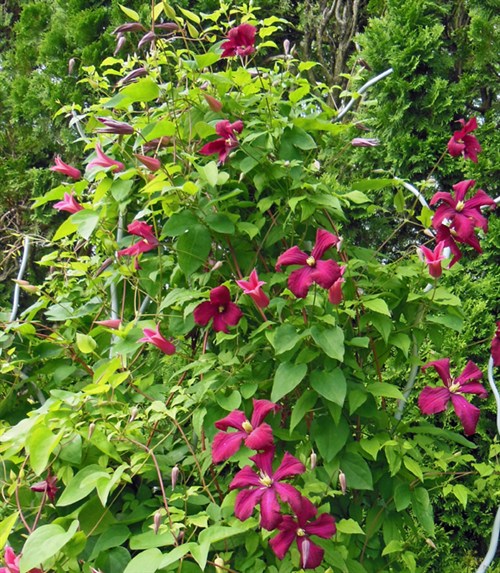So you guys nailed it last week, showed exactly what's
going on with my clematis (Klem AH tis? Klem AY tis?) Except you
didn't explain "Why me." We just moved in to this house last year
and I was so pleased to realize what that vine on the lamp pole
was. I always wanted one of those. Now everyone else's is gorgeous
and mine's a dud. Why does my vine have this clematis wilt when
every other one around is fine? - S.L. -
With respect, we think you're suffering from the same
perspective problem that affects those who yearn for blue
hydrangeas and romantic wisteria. That is, you are noticing only
the blooming plants. You probably don't even recognize the
non-blooming, wilt-struck clematis vines. (We say KLEM ah tiss but
it and the two you sounded out are all in the dictionary.)
You don't have to take our word for it. You could go door to
door, asking, "Do you have a clematis vine? How's it blooming?"
(You might try variable pronunciation to test for the most popular
sound. If you do, let us know!) We figure about one home in three
or four has or had a large-flowered types, and half of those are
suffering from wilt or were removed recently when the gardener
finally decided to end the frustration.
The small flowered species are resistant to wilt. Although they
are different in appearance from the large flowered hybrids, they
are still beautiful. More beautiful, if dependability is
given any weight in the assessment. Try one of these we swear by,
or check in at the Forum where we've asked others to
post their wiltless winners' names.

We took a large flowered clematis off of this trellis when
it wilted two years in a row. In its place we planted two small
flowered plants -- the star-like Clematis viticella
'Madame Julia Correvon' and the open bells of C.
texensis 'Princess Diana'.
Resistant, not immune
Sometimes a resistant, small-flowered clematis loses a section
of vine to wilt but it's the exception rather than the rule, and
rarely involves a main cane. That's how resistance works. It's not
immunity, just less chance of contracting the fungus and more
chance the plant will quickly compartmentalize the damage to end
the infection.